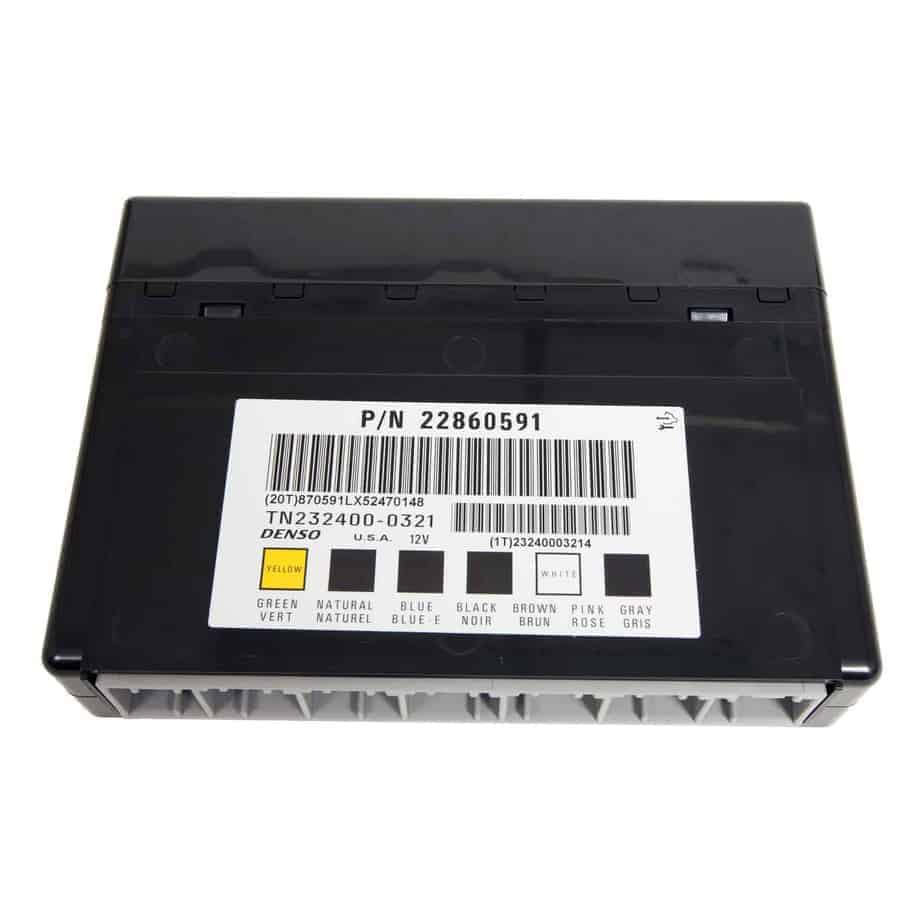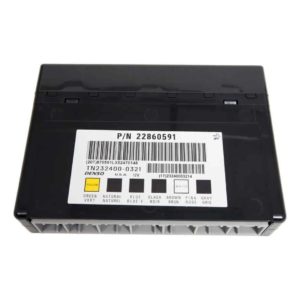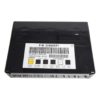Restore Your Truck’s Electrical Functions with a VIN-Programmed BCM
If your 2010 Chevrolet Avalanche 1500 is plagued by bizarre electrical issues, the Body Control Module (BCM) is often the culprit. As an experienced technician, I’ve seen firsthand how a failing BCM can turn a reliable truck into a source of constant frustration. It’s the central command for your vehicle’s body electronics, managing everything from your power windows and door locks to the interior lights and security system. When it fails, the symptoms can be confusing and intermittent, making diagnosis a real challenge.
This isn’t just a replacement part; it’s a complete solution. We take the guesswork out of the repair by programming this module specifically to your truck’s Vehicle Identification Number (VIN) before it even leaves our facility. This means it arrives ready for installation, loaded with the latest GM software updates, saving you a costly trip to the dealership for programming. Get your truck’s features working reliably again with a dependable, correctly configured 2010 Avalanche 1500 BCM.
Case Study: A Tricky Diagnosis
A customer’s 2010 Avalanche 1500 came in last week with a laundry list of strange complaints: the dome light wouldn’t turn off, the driver’s side power window worked only occasionally, and the radio would sometimes stay on after the key was removed. They had already replaced the battery and checked fuses with no luck. After connecting my scan tool, I noticed communication errors with multiple accessory modules. This pointed directly to the BCM. A faulty BCM can create a network disruption, causing these seemingly unrelated problems. We installed a VIN-programmed module, performed the necessary relearn procedures, and all the ghost-like electrical issues were gone. It’s a common failure point I’ve diagnosed hundreds of times on this GM platform.
Is Your Avalanche Showing These Symptoms?
- ✔ Power windows, door locks, or mirrors operating erratically or not at all.
- ✔ Interior or exterior lights flickering, staying on, or failing to illuminate.
- ✔ The vehicle’s security system randomly activating or not setting correctly.
- ✔ The radio or instrument cluster behaving strangely (e.g., staying on without the key).
- ✔ Inaccurate warning lights or messages on the driver information center.
- ✔ Problems with key fob recognition or remote start functionality.
A Straightforward Guide to BCM Installation
For the confident DIYer, replacing the BCM in your Avalanche is a manageable job. The module is typically located under the steering column on the driver’s side.
- Safety First: Always disconnect the negative terminal from your vehicle’s battery and wait a few minutes to ensure all systems are powered down.
- Locate the BCM: On your 2010 Avalanche, look for a black plastic box with multiple large electrical connectors under the driver’s side dashboard, near the steering column.
- Disconnect and Remove: Carefully unplug all wiring harnesses. They have locking tabs that need to be depressed. Once disconnected, unbolt or unclip the old module from its mounting bracket.
- Install the New Module: Mount the new, pre-programmed BCM in the same location. Securely reconnect all wiring harnesses, ensuring each one clicks firmly into place.
- Reconnect Battery: Reattach the negative battery terminal.
- Perform Relearn Procedures: This is a critical final step. You will need a capable diagnostic scan tool to perform the ‘Setup SDM Primary Key in BCM’ to clear any airbag faults. Additionally, a brake pedal position sensor recalibration may be necessary to ensure proper brake light and stability control function. If you are not equipped for this, a professional mechanic can complete these final steps for you.
Verified Vehicle Compatibility
This Body Control Module is a direct replacement for part number 25892622 and is interchangeable with a wide range of other GM part numbers. While this listing is focused on the 2010 Avalanche 1500 BCM, it also fits many other vehicles. Please verify your original part number or consult the list below. This module is compatible with the following part numbers: 10382479, 15093910, 15276271, 15299986, 15819552, 15828601, 15837419, 15872388, 15872421, 15880684, 15921352, 15921353, 15948438, 15948439, 20815898, 20839063, 20864767, 20864768, 20921435, 20921436, 20935349, 22860591, 25826124, 25826125, 25847588, 25847589, 25892622, 25910474, 25934762, 25934763, and 95151084.
It fits a broad range of GM models including, but not limited to: Acadia, Caprice, Captiva Sport, CTS, DTS, Enclave, Equinox, Escalade, Express/Savana Vans, G8, H2, Impala, Lucerne, Monte Carlo, Outlook, SRX, STS, Suburban, Tahoe, Torrent, Traverse, Vue, and Yukon models. Always match your part number for guaranteed fitment.
Frequently Asked Questions
Do I need to do any programming after I receive this BCM?
No. We program the module to your vehicle’s VIN before shipping. However, you will need to perform post-installation relearn procedures for systems like the airbag (SDM) and potentially the brake pedal sensor, which requires a suitable diagnostic tool.
How do I provide my VIN number?
After you complete your purchase, simply send us a message with your 17-digit VIN. We cannot ship the module until we have this information to perform the programming.
What happens if I don’t do the airbag (SDM) relearn procedure?
The airbag warning light on your dashboard will remain illuminated, and more importantly, the supplemental restraint system may not function correctly in the event of a collision. This is a critical safety step.
Is this a difficult part for a DIYer to replace?
The physical replacement is straightforward for someone with basic mechanical skills. It involves removing a few dash panels and unplugging connectors. The main challenge is having access to a professional-grade scan tool for the final relearn procedures.
Will this fix my power window and door lock problems?
If the Body Control Module is the root cause of the failure, then yes, this part will resolve those issues. The BCM directly controls those functions, and its failure is a very common reason for these specific problems on GM trucks and SUVs.


